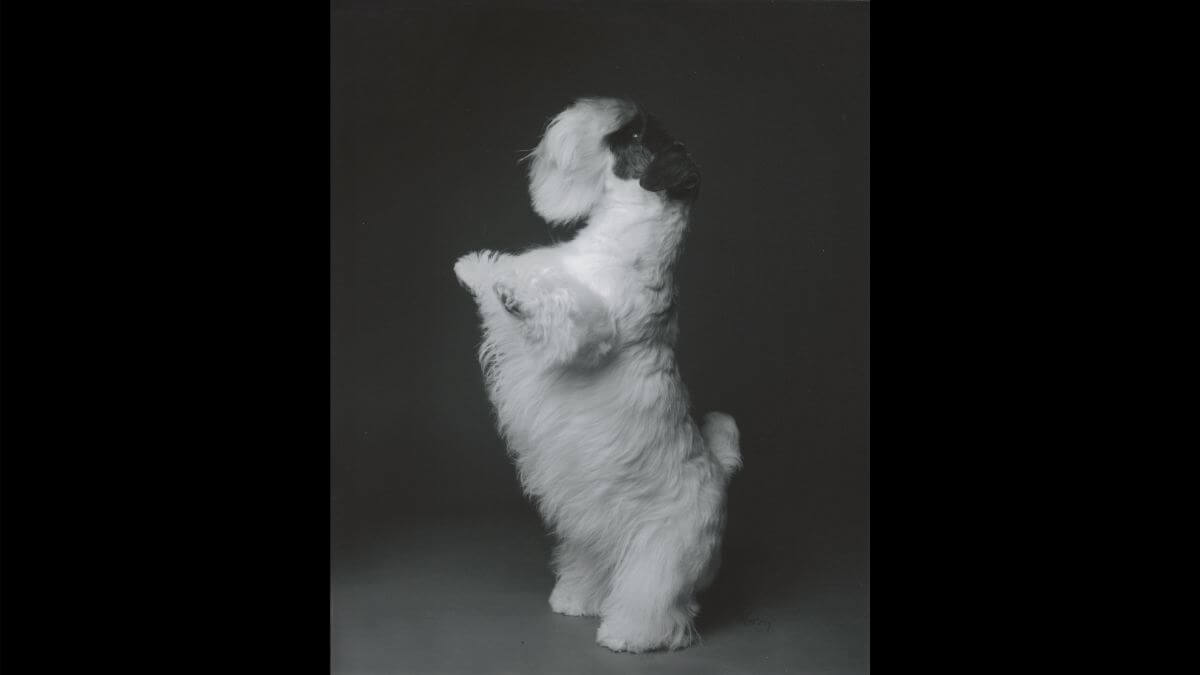


Home » Short and Sweet – But Lots to Learn

This article was originally published in Showsight Magazine, November 2013 issue.
The Standard, last approved by the American Sealyham Terrier Club and the AKC in 1974, continues to guide breeders and judges in their evaluations of the breed. A Sealyham Terrier should embody power and determination, be ever keen and alert, and possess extraordinary substance yet remain free from clumsiness.
No fine-boned or refined Sealy with a wary or reluctant outlook on life should be awarded in the ring. The standard emphasizes “strong” six times and “power/powerful” four times, including the phrase “of extraordinary substance.” These words leave no doubt about what is expected.
Character and temperament are equally important. At its best, the Sealyham Terrier is a classic show dog and a loyal, entertaining family member. While the breed may not be a top candidate for obedience training, individuals have excelled in rally, agility, obedience, and earth dog trials. A happy Sealyham is unmistakably happy.
The “devil is in the details.” The breed should stand about 10½ inches at the withers. Size is more important than weight unless the dog’s weight is affected by poor condition or overly fine bones. A four-year-old dog should not weigh the same as a one-year-old.
This is not a long dog. With a height of 10½ inches at the shoulder, the back length should match. The overall length comes from the brisket protruding in front, with the front legs set well under the body, and powerful hindquarters extending beyond the tail set.
When approaching a Sealyham on the table, greet the dog to alert it to the hands-on examination, which also allows a brief assessment of temperament.
For the head, skull, cheeks, jaws, and teeth, remember “strong and powerful.” Coarseness is undesirable, but the breed’s original purpose required strength. The head should be “long, broad, and powerful.” A large, black nose is essential, as a small black button nose does not suit the head.
Eyes should be very dark and oval. Large, round, or protruding eyes are a serious fault and detract from the keen terrier expression. While a lack of eye rim pigmentation is not a fault, it diminishes the desired terrier look.
The standard permits lemon, tan, or badger markings on the head and ears or an all-white head. Many modern dogs have black head markings. These markings are neither an advantage nor a disadvantage and should not influence judging.
Ears are significant. Improper placement or hound-like ears detract from expression. The fold should align with the top of the skull.
Examine the neck, shoulders, and front legs carefully. Check shoulder layback, elbows (tucked into the rib cage), legs, pasterns, and large compact feet. Move furnishings aside to assess correct front structure.
The body should be substantial and short-coupled with a rounded ribcage—no slab-sided Sealys, please. Ensure the topline is level (not artificially filled with hair). Powerful hindquarters and well-aligned rear legs are essential.
Tail carriage contributes to balance. While the standard does not address docked versus undocked tails, an undocked tail should not be considered a fault.
Many modern Sealyham coats fail to meet the standard’s requirements. Stripped jackets should be evaluated for hardness and wiry texture. Full furnishings, often incorrectly textured, can obscure the breed’s silhouette, making hands-on evaluation essential.
Movement is the ultimate test of structure. While the Sealyham’s movement does not require detailed description, it must reflect sound construction.
Finally, note that there are no disqualifications in the Sealyham Terrier Standard.